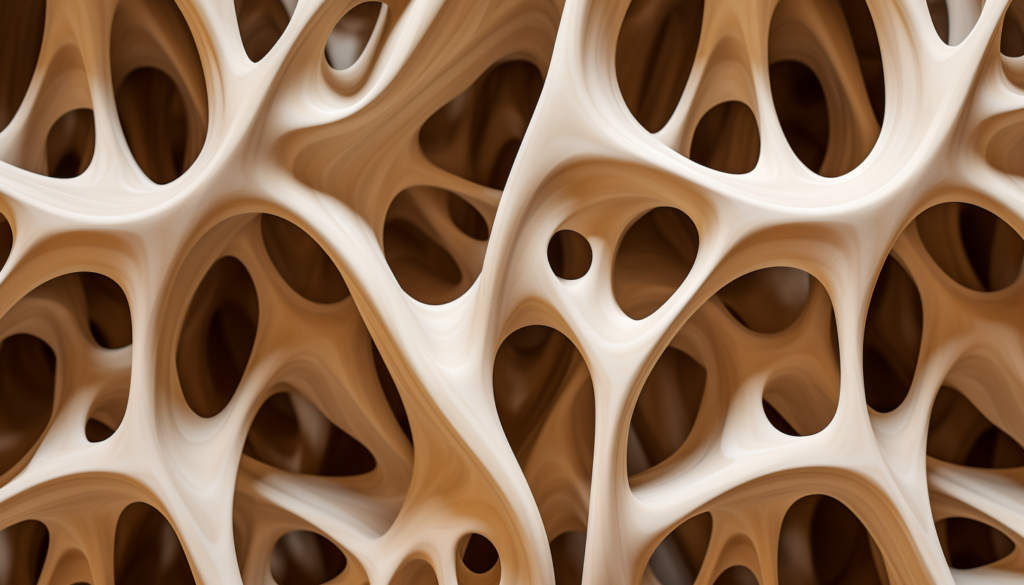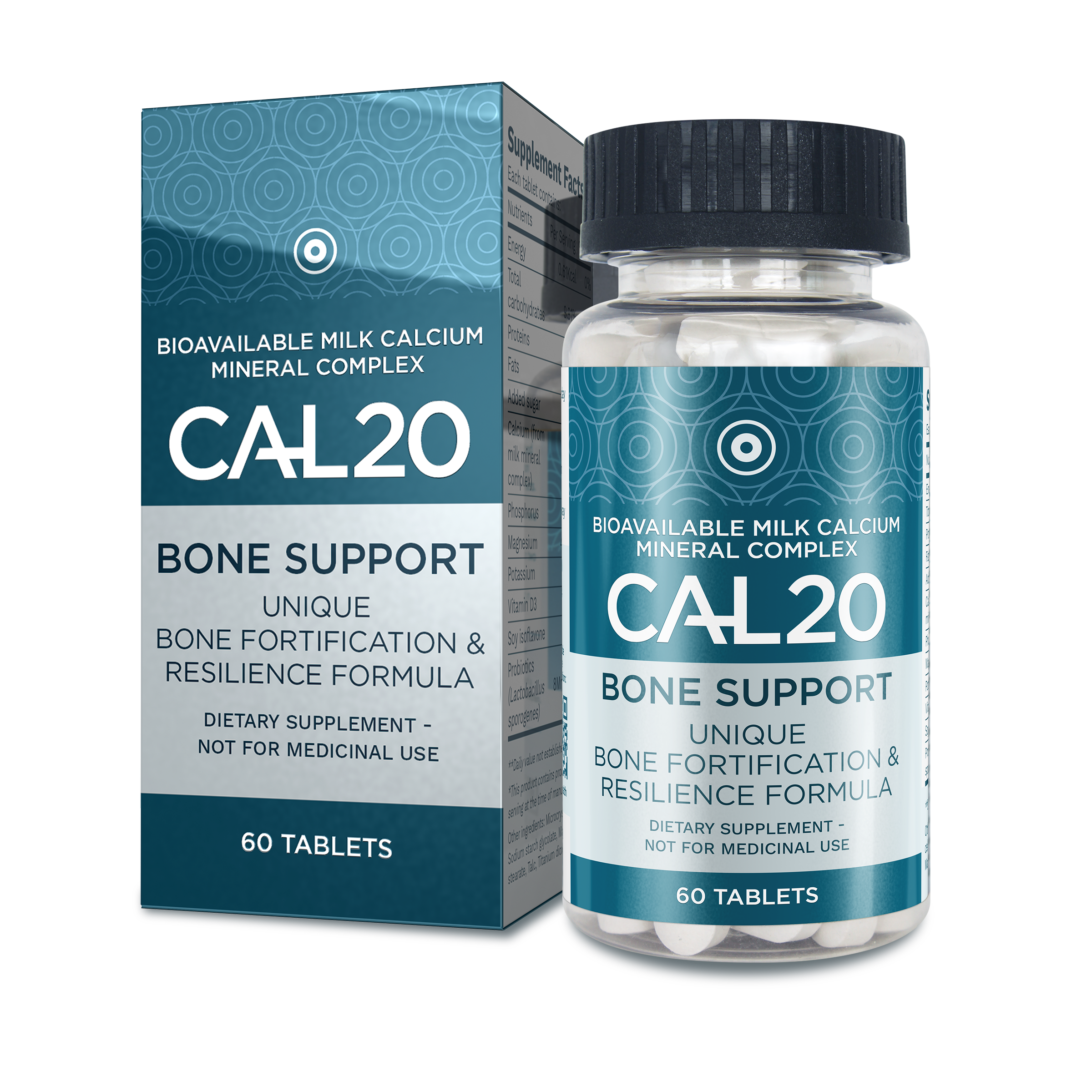What is Bone Health?
Bone health refers to the overall health and strength of the skeletal system, which includes bones, joints, cartilage, and other connective tissues. Good bone health is important because it helps to maintain the structural integrity of the body, supports muscle function, and protects vital organs.
Bone health can be affected by a variety of factors, such as age, genetics, lifestyle choices, and medical conditions. Good nutrition and regular exercise are important for maintaining bone health, as is avoiding smoking and excessive alcohol consumption. In addition, getting enough vitamin D and calcium is also essential for building and maintaining strong bones.
Poor bone health can lead to a variety of conditions, such as osteoporosis, fractures, and general bone loss, which can greatly impact the quality of a person’s life as they age. Therefore, it is important to take steps to maintain good bone health throughout one’s life, not just when we get older.
Bone Density Measurements
Bone density measurements (dexa scans) are used to diagnose bone disease such as osteoporosis, a condition where bone mass is lower than what it should be, and to predict how likely the bones are to break.
Osteoporosis
Osteoporosis is when bones lose minerals such as calcium more quickly than the body can replace them. This leads to a loss of bone thickness (also called bone mass or density). When a person has osteoporosis, their bones become thinner and in severe cases, even a minor bump can cause a break (fracture).
About Bones
Bones are living tissues that constantly break down and rebuild themselves. Proper bone health requires a balance between bone formation and bone resorption, which is the natural process of breaking down old bone tissue and replacing it with new tissue.
Bones rebuild through a process called remodelling. This process involves two main types of bone cells: osteoclasts and osteoblasts.
Osteoclasts are responsible for breaking down old or damaged bone tissue. They do this by secreting enzymes that dissolves the mineralized matrix of bone. This process is known as bone resorption.
Once the old bone tissue has been broken down, osteoblasts move in to rebuild the bone. Osteoblasts are cells responsible for bone formation, and they play a crucial role in maintaining bone health. These osteoblast cells synthesize new bone tissue by laying down a matrix of collagen fibres and other proteins. Calcium and other minerals are then deposited in this matrix, which gradually hardens and forms new bone tissue.
Overall, the process of bone remodelling is a continuous cycle of bone breakdown and rebuilding, which helps to maintain the strength and integrity of our skeletal system.
Hormones
Bone mineralization (or bone calcification) is essential for the hardness and strength of bones and the process is directed by two hormones; Parathyroid Hormone (PTH) and Calcitonin, which balance in opposite directions: When blood calcium is low, PTH pulls calcium out of the bones into the blood and with the help of calcitriol (the hormonal form of vitamin D), pulls calcium out of the intestines and into the blood. Conversely, when there is too much calcium in the blood, Calcitonin pushes the excess calcium back into the bones and moves calcium out of the body via the kidneys. Due to these processes of bone remodelling and bone mineralization, your bones are constantly changing.
Your estrogen and testosterone levels also affect your bone health, because they regulate the processes of bone formation, remodelling and breakdown in the body. Estrogen and to a lesser extent testosterone in both men and women helps to protect bone density. In females, estrogen levels decrease significantly during menopause, which can lead to rapid bone loss and an increased risk of osteoporosis Estrogen helps to regulate the activity of osteoblasts and osteoclasts. When estrogen levels drop, bone resorption outpaces bone formation, which leads to decreased bone density. Testosterone in men stimulates the activity of osteoblasts. As men age, testosterone levels decline, which can contribute to a decrease in osteoblast activity which then results in further bone loss and increased risk of osteoporosis.
Peak Bone Mass
Bone density generally increases until around the age of 30, when it reaches its peak. As we progress beyond the age of 30, the number and activity of osteoblasts, the cells responsible for bone formation, decline. Consequently, the equilibrium between bone formation and resorption tilts towards resorption, resulting in a gradual reduction of bone mass and density. This process is a significant contributor to the aging phenomenon.
Additionally, other factors such as chronic inflammation, oxidative stress, and changes in the micro-environment of bone cells, can also contribute to a decrease in osteoblast activity. Studies have shown that the medications used to cure diseases such as cancer, hypertension, heart disease, osteoporosis, diabetes, Alzheimer’s, tuberculosis and many more, may also have an adverse effect on calcium absorption into the bones.
Blood Cells
Our bones contain bone marrow, the epicentre of blood cell generation and immune function, which produces 95% of our bodies blood cells. Our blood cells start as stem cells in the one marrow which then become either platelets, red blood cells or white blood cells depending on your body’s condition. Platelets are created for clotting blood when you are wounded. Red bloods cells carry oxygen to the cell tissue and carry carbon dioxide away from the tissue, back to the lungs. White blood cells are created when we need to fight infection or heal wounds.
In essence, the significance of maintaining healthy bones extends beyond structural integrity, as their integral role in housing bone marrow underscores their indispensable contribution to the intricate processes of blood cell production, clotting, oxygen transport, and immune response, ultimately safeguarding our overall well-being.
Cal20
Cal20 is a highly bioavailable natural milk calcium mineral complex with a patented extraction process, which maximizes bioabsorption and bone fortification. Cal20 has shown to support bone development and increases bone mass in clinical studies.
The key factors contributing to Cal20’s near 100% bioavailability is the fact that it is pure elemental calcium, which is readily absorbed by the body without requiring additional breakdown. This elemental calcium is also a micronized form of calcium with particle sizes below 40 microns, which optimize bioabsorption. The elemental calcium in Cal20 also exists in its ionic form. This ionic state allows for easy bonding with water, enabling efficient absorption by the body. Moreover, Cal20’s high bioabsorption rate and the absence of salt, prevent gastric irritation such as bloating, constipation and kidney stones.
What most people do not know is the body is only able to absorb about 2% of common calcium supplements, namely calcium carbonate and calcium citrate, on the market.
Cal20 maintains a 2:1:0.3 calcium:phosphorus:magnesuim balance, mirroring that of human bones, which enhances the calcium absorption. Cal20 harnesses the power of milk calcium, phosphorus, magnesium, potassium, Vitamin D, plant nutrients, and probiotics, providing comprehensive support for bone maintenance and repair.
Conclusion
In conclusion, the multifaceted significance of maintaining healthy bones becomes evident through their role as the primary reservoir of bone marrow, essential not only for blood cell synthesis but also for preserving calcium balance, supporting muscle function, and preventing debilitating conditions like osteoporosis. Bones play a pivotal role in sustaining a resilient and thriving physiological balance within the body.
Maintaining a healthy lifestyle, including regular physical activity such as resistance training, brisk walking, and weight training, eating a nutrient dense diet, avoiding smoking and alcohol consumption and decreasing your caffeine intake, will help support your bone health and potentially slow the decline in osteoblast function that occurs with age.
To support your journey to a vibrant life with strong healthy bones, include Cal20 in your daily routine and pursue your passions with confidence and vitality.
References
Dr. M.S. Reddy and Dr. D.R.K. Reddy: Anti-aging: Review and Experimental Clinical Study of Bioavailable Calcium 1433 International Journal of Pharmaceutical Sciences and Nanotechnology – 1438 Int J Pharm Sci Nanotech Vol 4; Issue 3 • October−December 2011
Avioli IV (1990). Therapy induced osteoporosis (Type III osteoporosis). In: Osteoporosis: physiological basis, assessment, and treatment, edited by HF Deluca and R Mazess, New York: Elsevier, 17.
Hunt JN and Johnson C (1983). Antacid induced calcium loss. Arch Internal Med 150:2037-2039.
Spencer and Kramer L (1983). Antacid-induced calcium loss. Arch Inter Med 143:657.659.
Spencer H, et al., (1985). Alcohol-osteoporosis. Am J Clin Nutrition 41:847.
https://www.bonehealth.org.au/bone-health-for-all
https://www.jeanhailes.org.au/resources/bone-health-fact-sheet
https://orthoinfo.aaos.org/en/staying-healthy/healthy-bones-at-every-age/




